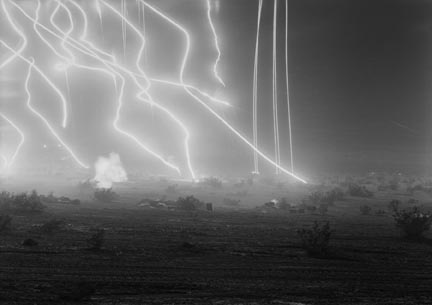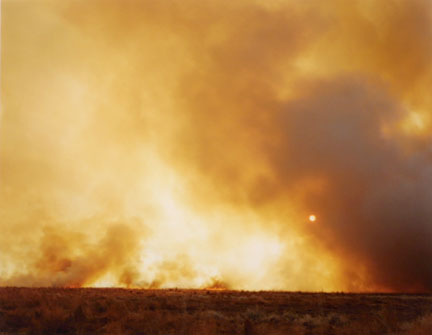As I thought about it more, After Nature seemed like a title that was taking a stab at creating a new term to define our culture's shifting conceptions of nature. The only problem is that it was so close to being called post-nature that I began to imagine a debate around environmental issues that was what post-black is to race studies. What I mean is that they may as well have called it post-nature and I can't wait until we are post-putting post in front of everything. I also mean that the idea that there is an after nature is an extremely paradoxical and contentious idea. Would this "after nature" mean that nature had somehow become socially and politically irrelevant? Perhaps the works in the show were about a technological future where humans were no longer biological or had found a way to free themselves from relying on the resources of the natural world. Whatever. It sounded like bad sci-fi.
At the time, I remember going to the "view the online exhibition" tab on the New Museum's website. This exhibition (if you can call it that) is a completely esoteric example of the anti-layout aesthetic that is very trendy but works in very few cases. I didn't even know what I was looking at and I am still confused about the way the text relates to the images it sits on top of and the images it links to. So far, After Nature seems like the nonsense I thought it would be.
When I finally read the exhibition text, looked at installation shots of the works of art and listened to the online audio commentary, the ideas behind the show started to make more sense to me. From the New Museum website:
"After Nature" surveys a landscape of wilderness and ruins, darkened by uncertain catastrophe. It is a story of abandonment, regression, and rapture—an epic of humanity and nature coming apart under the pressure of obscure forces and not-so-distant environmental disasters...folding fact into fiction, the exhibition brings together artworks that can be interpreted as relics, idols, and documents. Temporally detached from any point of orientation, the exhibition emerges as a study of the present from a place in the future.
Though I am not sure how the exhibition would seem in person since I never went to it, the works that curator Massimiliano Gioni choose to include do seem like artifacts that create a narrative of our time from a future perspective. I am particularly drawn to this piece by Paweł Althamer.

Paweł Althamer - Self-portrait, 1993.
This is a life sized sculpture of the artist made from grass, hemp fiber, animal intestine, wax, and hair. First of all, it seems like a conservator's nightmare which is awesome. It is vulnerable and uses archaic materials and techniques of binding to hold it together. This makes the piece seem like a relic of the past the predates modern materials and technology. The piece reminds me of a Greek or Roman statue. But from the neck up, Althamer is a modern man, perhaps even an academic. He wears smart and sleek spectacles - half nerd and half sculpted Greek god.
Why would an artist make such a piece. He could have just cast his entire body and made a more realistic self-portrait. In the narrative of the exhibition, Althamer's representation of himself is perhaps an artifact representing a civilization that arose after an environmental crisis and had to reform its identity and society from the basic materials of the earth that compose this sculpture. Maybe the glasses are an artifact that predates this crisis. In any case, there are layers of past, present and possibly disastrous (and fictive) future that are a recurring theme throughout the exhibition.
I think that the exhibition as a whole is a bit fragmented. Sometimes you feel like you are looking at an artifact, sometimes a document and sometimes a sci-fi movie. This is intentional because, according to Gioni, the exhibition was inspired by Herzog's unique ability to combine document, fiction and narrative. I just don't think that the exhibition is able to juggle these three somewhat contradictory ideas nearly as well as Herzog does in his films.








